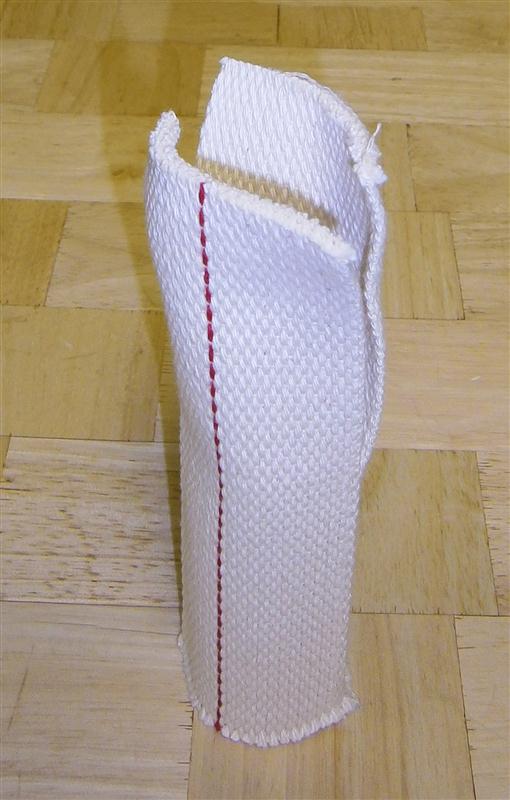A few months ago, one of my consulting clients mentioned that she had over-stocked her supply of vegetable oil. She had also neglected to store it in her freezer, to extend its storage life. The result after four years was 10 quarts of corn oil and two quarts of olive oil that had gone rancid. She asked if there was anything she could do with the oil. (She bemoaned the fact that that olive oil was particularly expensive.) My reply: Buy some floating wicks, and burn up that oil as a source of light and heat, during power failures.
Floating wicks (also known as “water candles”) are particularly popular in Israel, as a replacement for more expensive traditional candles, for Chanukah celebrations and at weddings. These are simply short pieces of waxed wick that are passed through a thin disc of cork with an aluminum heat shield on one side. In my experience, each one of these lasts for an average of 20 hours of burning time, if you push up and trim the wick with scissors after the first 8 or 10 hours of burning. The cooking oil is consumed very slowly, and when burning fresh oil they are nearly odorless. (Although, leaving any rancid oil out in a room will of course produce a bit of odor. However, that sure beats just dumping $20 per gallon olive oil on your compost pile.)
Floating wicks provide very thrifty emergency lighting! You can buy a box containing 50 wicks and 50 floats for as little as $1.35. (I prefer the larger diameter variety, which is a bit more expensive.) At that price, I would recommend buying at least one or two dozen boxes. (Since these are very compact, lightweight, durable, versatile, divisible and eminently useful, they will undoubtedly be great to store for bartering.)
Note: Although the markings on the boxes are in Hebrew, these are actually now made in Mainland China. This is yet another sad example of modern-day “Made only in China” consumer products.
For safety, it is best to burn floating wicks in a very stable, shallow container with a heavy flat bottom such as: the cut-off and sanded bottom half of a punted wine bottle (see video), a drinking tumbler with a heavy base, or a square-bottomed glass or stainless steel pet food bowl. (Not plastic!) Put a half inch of water in the bottom of the bowl, so that the wick will be self-dousing once all of the thicker layer of oil on top has been consumed. With a large bowl, you can burn several wicks in the same bowl simultaneously to throw additional light.
You can adjust doused wicks without getting your fingers oily if you use a pair of blunt hair-pulling tweezers. (The boxes of floating wicks usually each come with a tiny pair of plastic tweezers, but they are pretty pathetic. Get a proper pair of tweezers.)
These same floating wicks can be used to burn a wide variety of plant and vegetable-derived oils that are triglycerides, including: Corn oil, saffola oil, soybean oil, rapeseed/canola oil, peanut oil, sunflower oil, and olive oil. Warning: Just don’t attempt to use these wicks with anything more volatile, such as diesel or kerosene!
By the way, you can also easily modify a kerosene lamp to burn vegetable oils, with mixed results. See this video for details.
Also, the kerosene lamp burners that screw on to the top of standard small-mouth Mason jars are available via mail order. These are also quite versatile, so stock up, but note that because the thin glass lamp chimneys are so incredibly fragile and prone to damage in shipment I recommend buying them locally rather than by mail order. Buy at least two chimneys per lamp base.
I recommend that every well-prepared family should keep plenty of floating wicks on hand for barter, for your own use for any cooking oil that has gone rancid, or for any oil that you predict will go rancid before you have the chance to use it. – JWR










